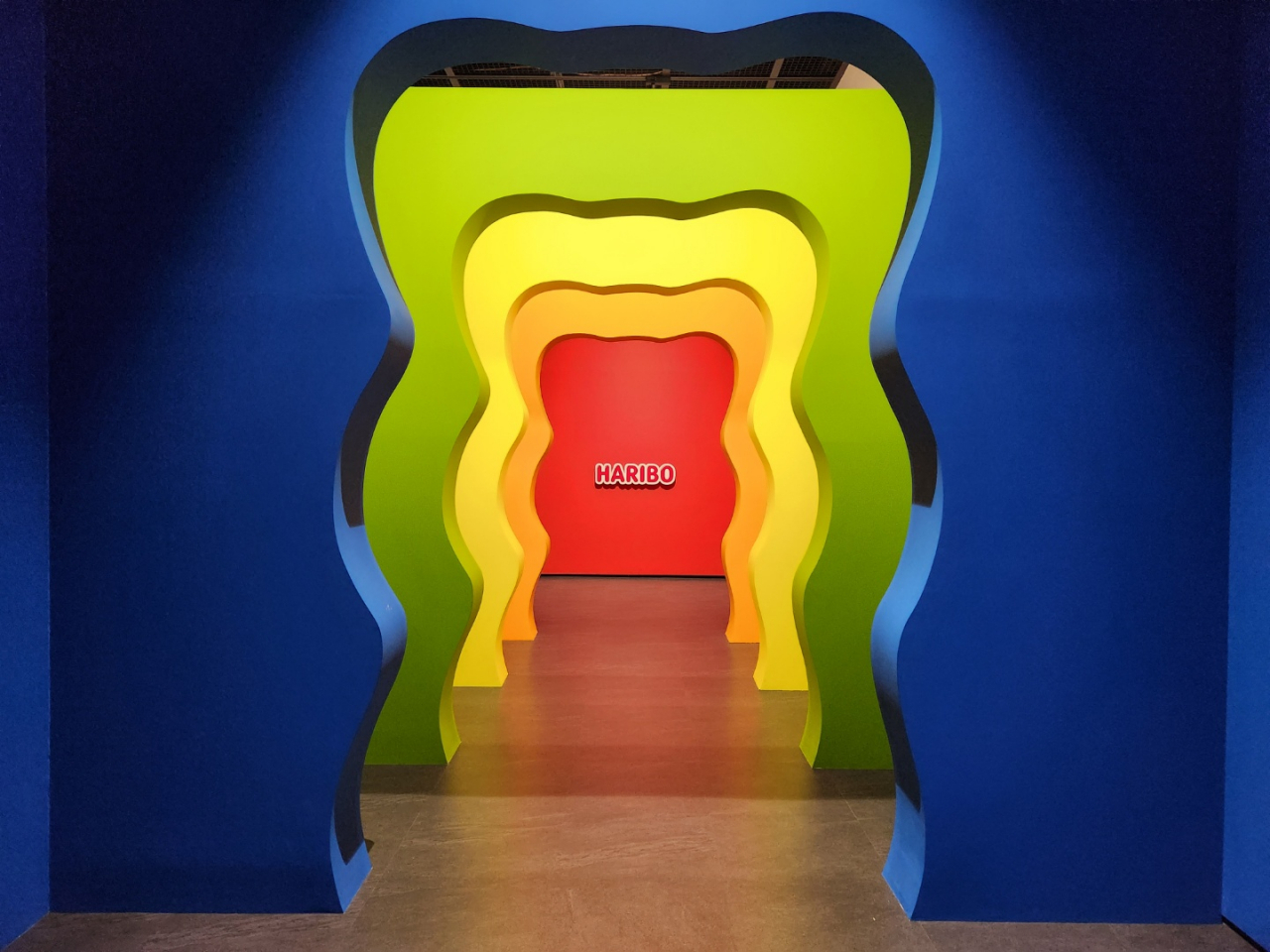
To enter “Haribo World,” you'll pass through multiple gates shaped like the brand's famous gummy bears. Inside a room at the end of the passage, the signature Goldbears come alive via media art that covers the entire wall, ceiling to floor.
At this exhibition, currently underway at Annyeong Insa-dong's Insa Central Museum in central Seoul, the inspiration obviously is children’s and many adults’ favorite gummy -- Haribo Goldbears.
Opened in October this year jointly by the Haribo headquarters in Germany and Seoul-based digital content company Peopulley, “Haribo World” celebrates the global confectionery brand’s 100th anniversary.
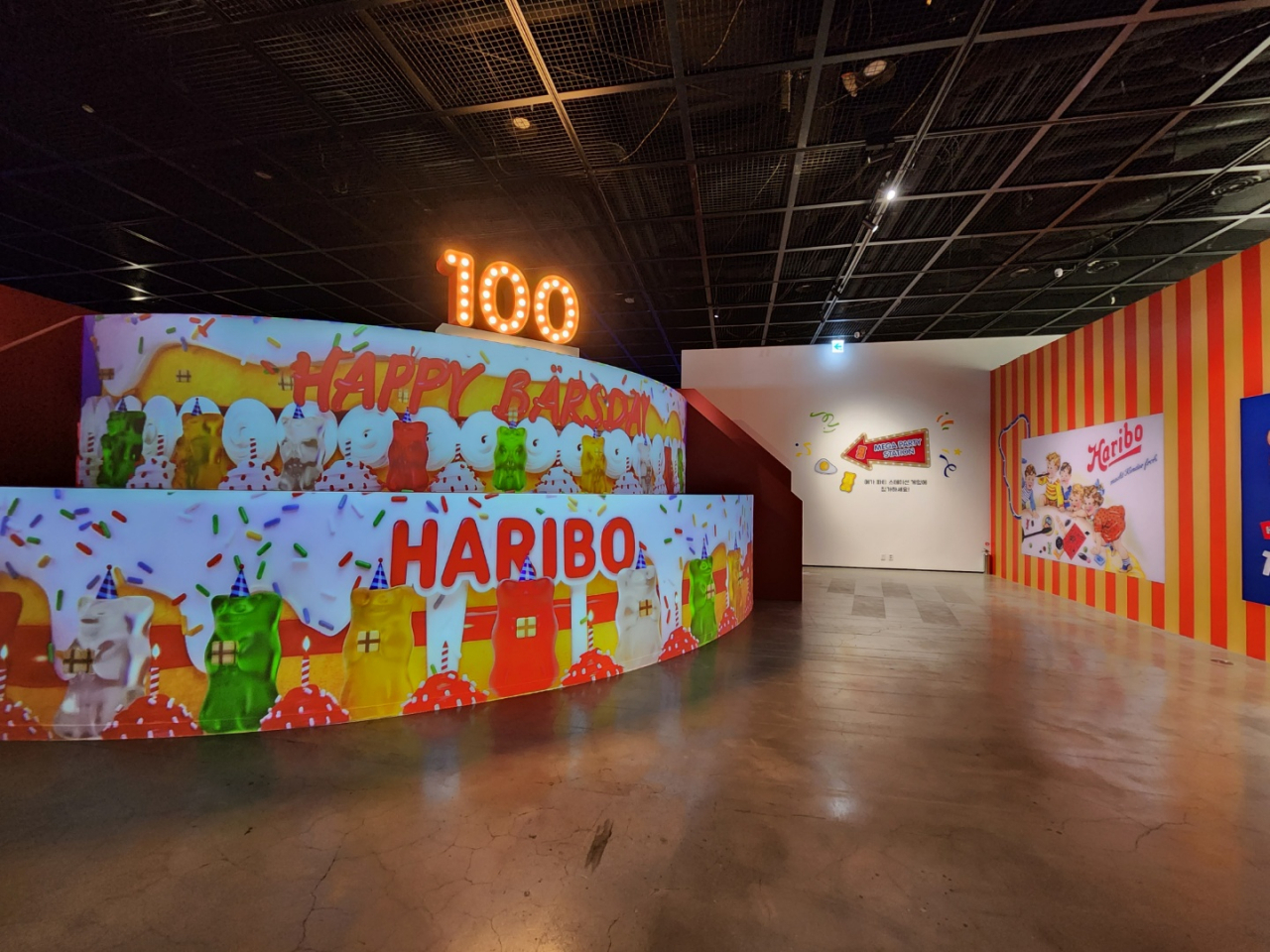
Inside the 1,300-square-meter exhibit hall are multiple statues of Haribo bears and fancy decorations, including a huge cake sculpture and multicolored ceiling banners.
A popcorn machine is filled with Haribo Goldbears in front of the cinema and a newsstand displays packets of different flavors near where a gummy bear statue greets visitors; popular photo spots abound throughout. Recreational facilities like trampolines and arcade games add a party atmosphere to the exhibit.
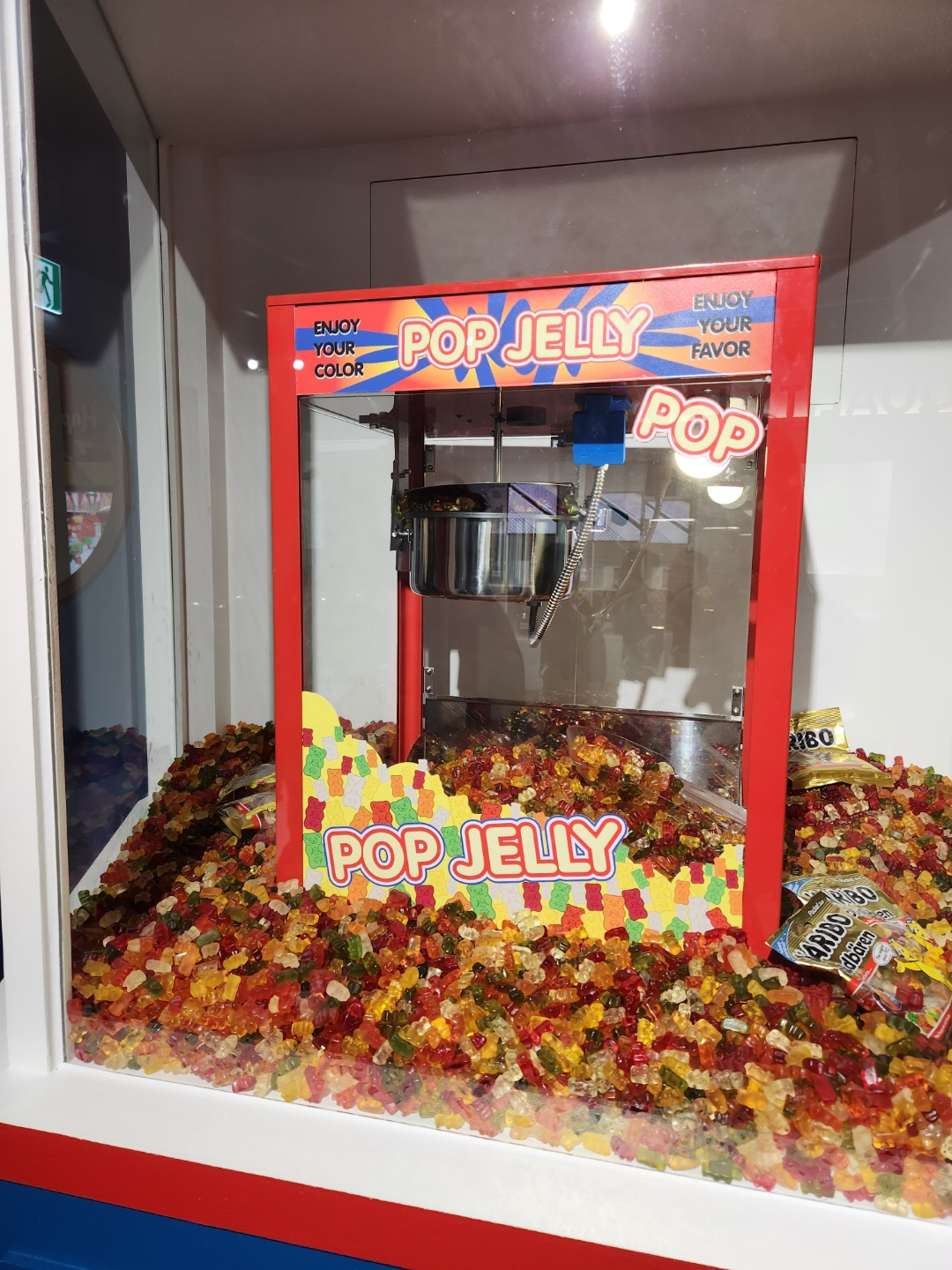
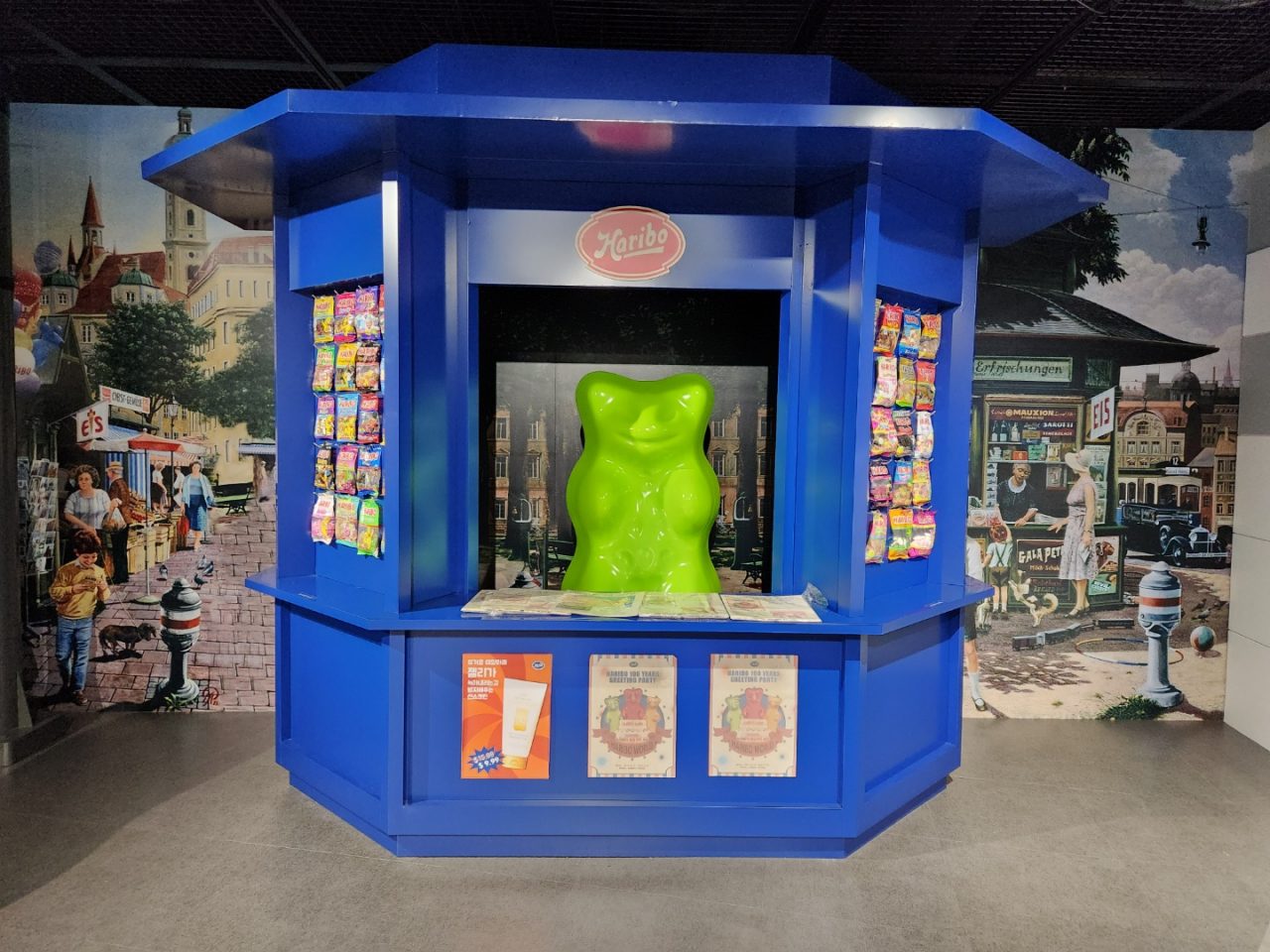
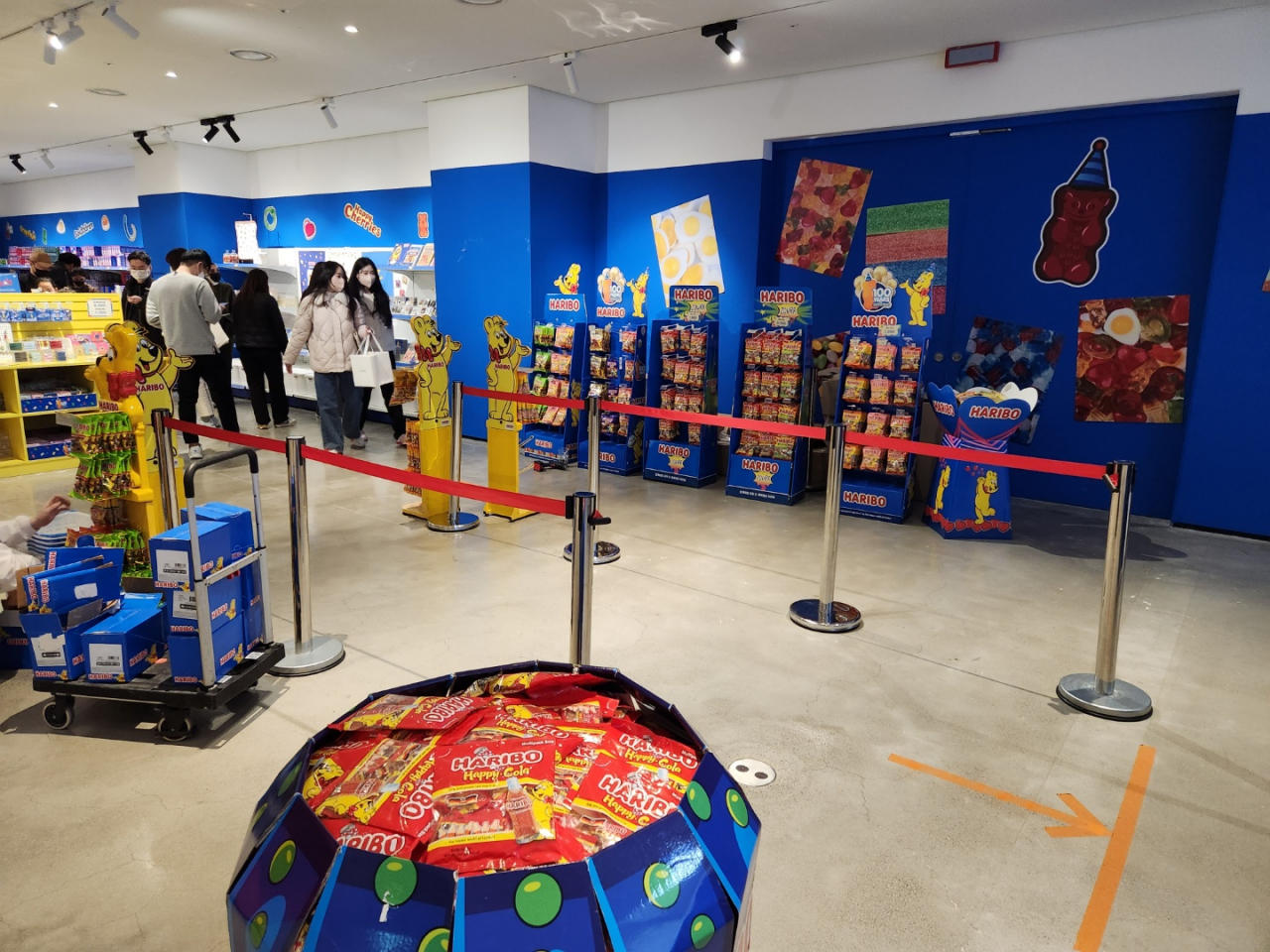
A gift shop is full of Haribo-inspired merchandise from T-shirts and stationery to huge sacks of sweets.
A 24-year-old visitor surnamed Hwang said the bears have become a highly recognizable and popular character, despite not being from an animated film or a fashion brand’s logo.
“This kind of art exhibition is not only popular among gummy lovers but also people who like cute items,” said Hwang, who introduced herself as a college student in Seoul. The Haribo exhibition will run through March 12 next year.
Food meets art
Haribo is one of several global food brands hosting pop-up exhibitions in Seoul right now.
American ice cream brand Haagen-Dazs, in collaboration with Lotte Gallery, is presenting the art exhibition “Melting Point,” which takes place through Nov. 30.
The pop-up show presents more than 30 works from nine local artists. Their paintings, illustrations and media art installations are all inspired by different colors, flavors and shapes of Haagen-Dazs ice cream, bars and sorbets, according to exhibition staff.
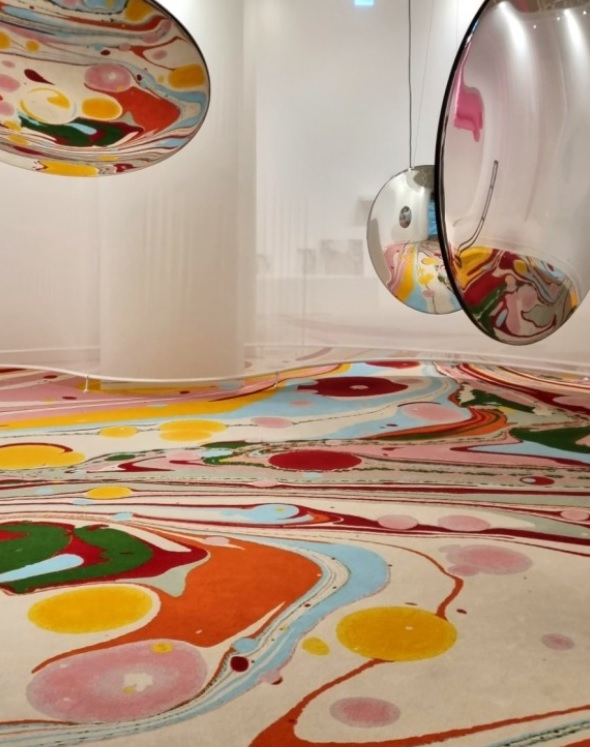
Even the carpet on the floor conjures up images of melting ice cream. Long, vertical installations hanging from the ceiling visualize the soft, chewy texture of Haagen-Dazs ice cream, while towers of ice cream made of fabric represent a wide variety of the brand's products.
“It’s interesting to see familiar food items turn into works of art. I like how they combined colors to express ice cream flavors,” said Cho, who visited the exhibition Thursday afternoon with her daughter.
Another global food brand that has collaborated to visualize their product through art is Coca-Cola. It has collaborated with d'strict, a Korean company renowned for producing top-quality, immersive media art content. The result is “Dreamworld,” currently showing at the Wisepark Hongdae Seoul until Dec. 4.
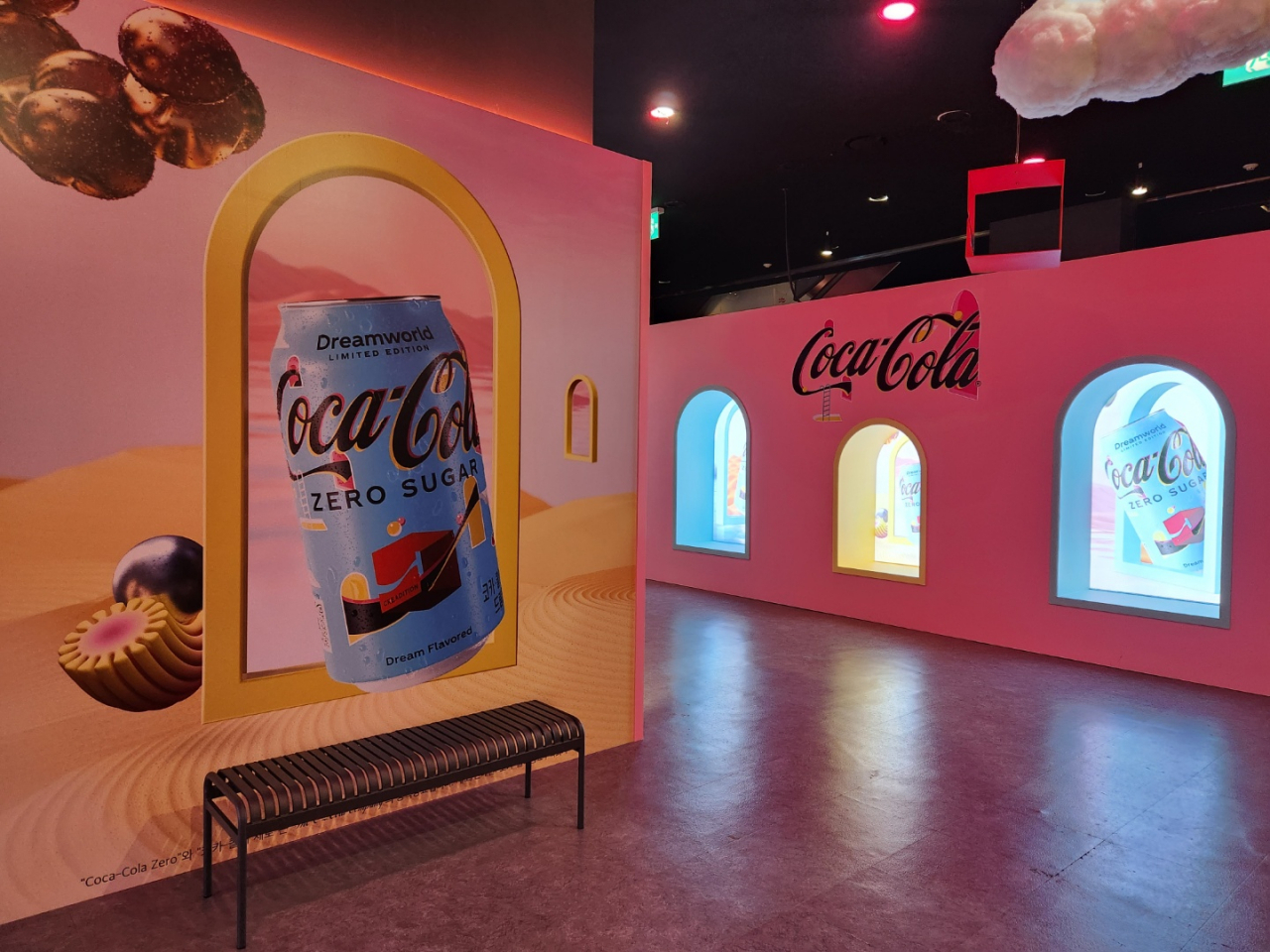
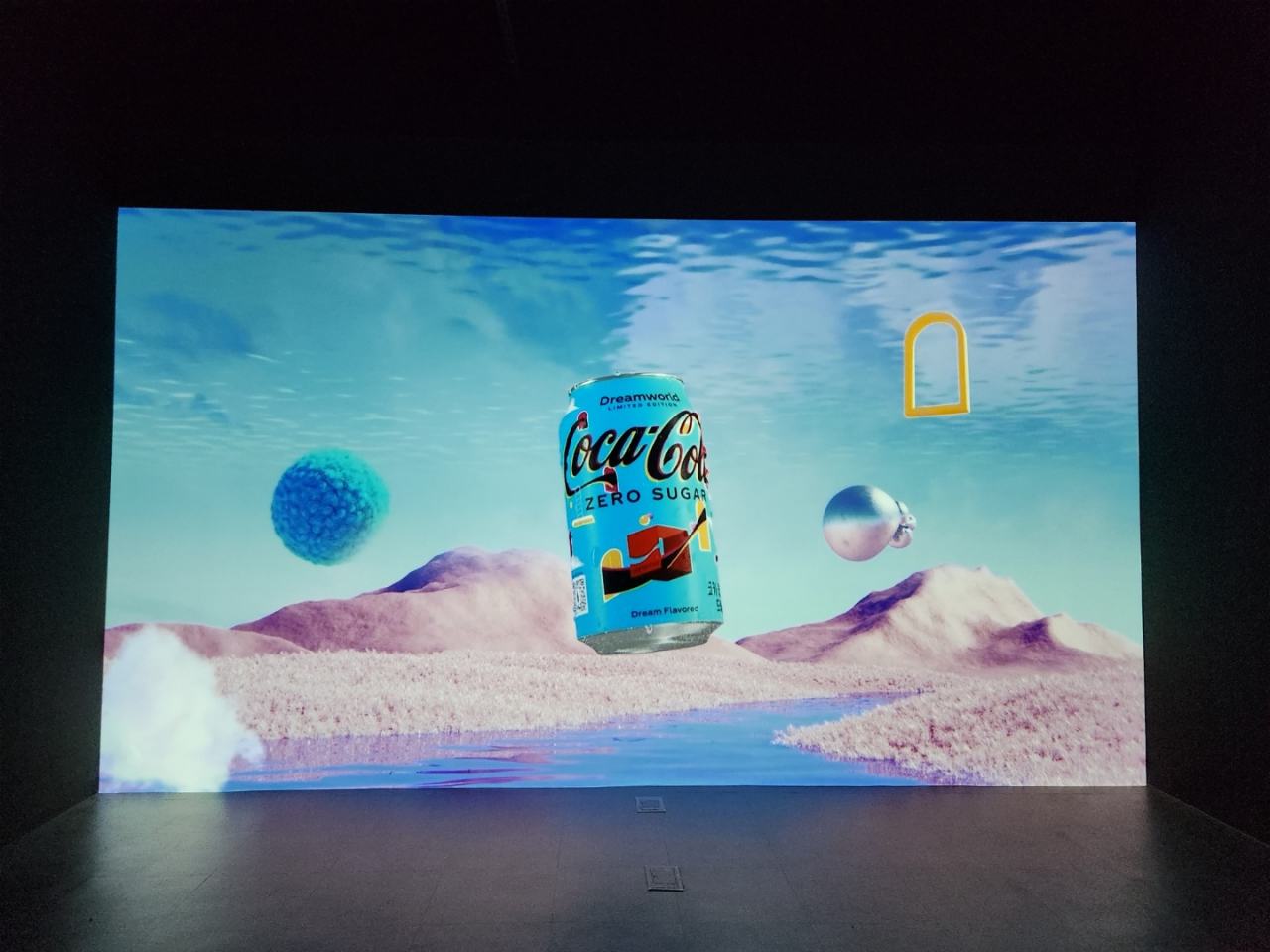
A 10-meter electric screen showcases a short video of vibrant illustrations on nature blended with real pictures of Coca-Cola products.
Pink walls painted with the logo of Coca-Cola and a fake pink vending machine filled with Coca-Cola drinks beckon visitors looking for a place to take a few snaps.
The event venue is also furnished with immersive media art displays created by d'strict. They captivate visitors with moving images of an ocean projected on the walls, ceiling and floor, as if standing at the seashore.
“Bright colors of walls and abstract illustrations blended with an image of Coca-Cola can altogether give me an impression of American pop art. I think the exhibition clearly conveys Coca-Cola’s brand image,” said Jang, an office worker in her 20s.
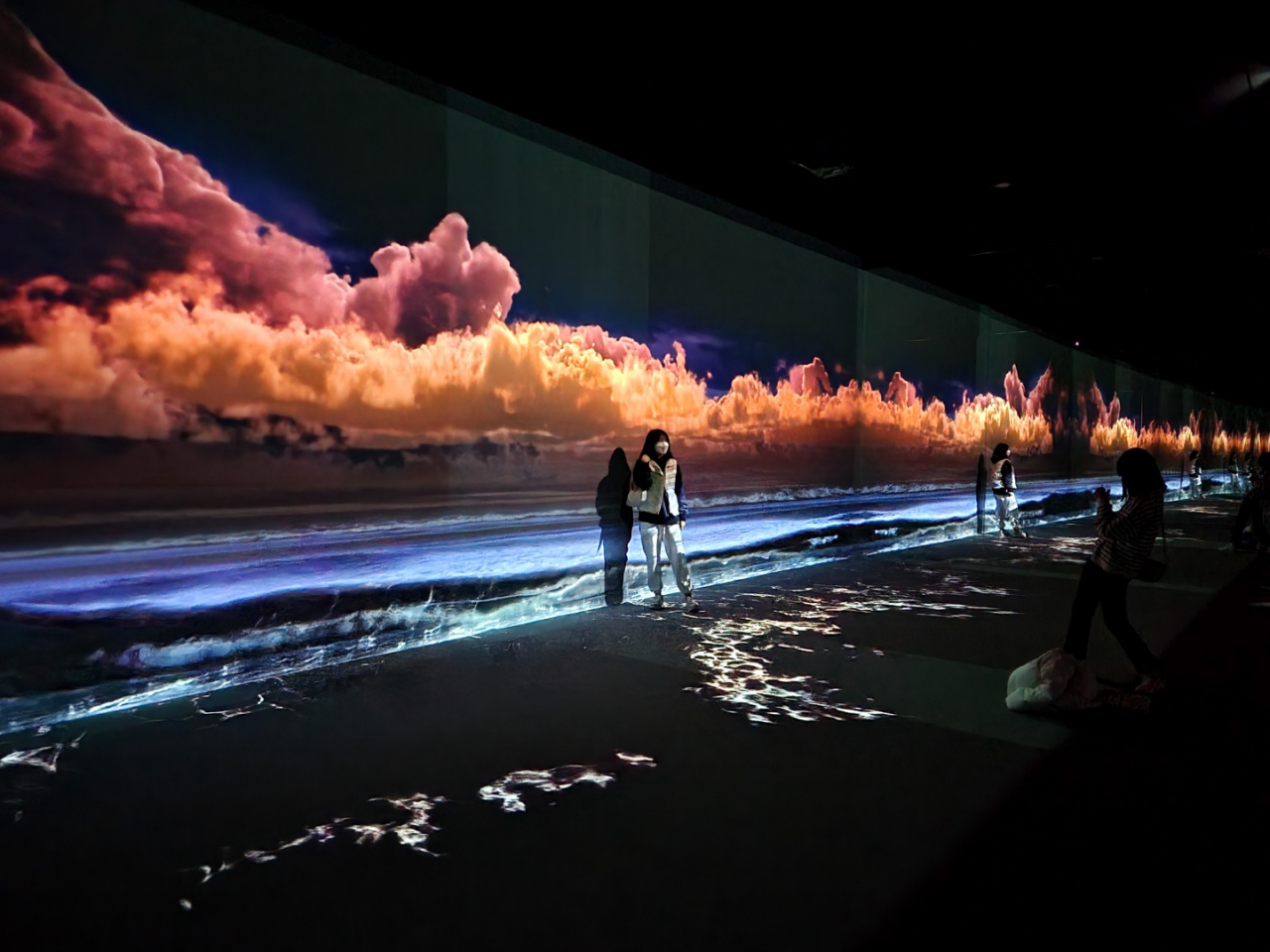
Why art?
The recent boom of the local art market has, in part, led many food companies to incorporate art into their brand campaigns, according to some business experts.
“There has been swelling demand for artworks among young collectors, millennials and Generation Z who crave visuals. Promoting a brand’s identity in an aesthetically pleasing manner has become more important than before,” said Lee Chae-ho, a business professor at Dongguk University.
“Visualization of food products through art exhibitions could increase brand awareness and positively impact a company’s marketing efforts if related pictures and videos go viral online and gain traction with many people.”
Lee noted softer anti-coronavirus rules further boosted food companies’ art marketing.
“Museums and galleries were among the hardest hit by the COVID crisis. Food companies’ pop-up shows picked up steam thanks to the easing of social distancing rules coupled with people’s pent-up demand for outdoor activities,” he said.





![[KH Explains] Hyundai's full hybrid edge to pay off amid slow transition to pure EVs](http://res.heraldm.com/phpwas/restmb_idxmake.php?idx=645&simg=/content/image/2024/04/18/20240418050645_0.jpg&u=20240419100350)